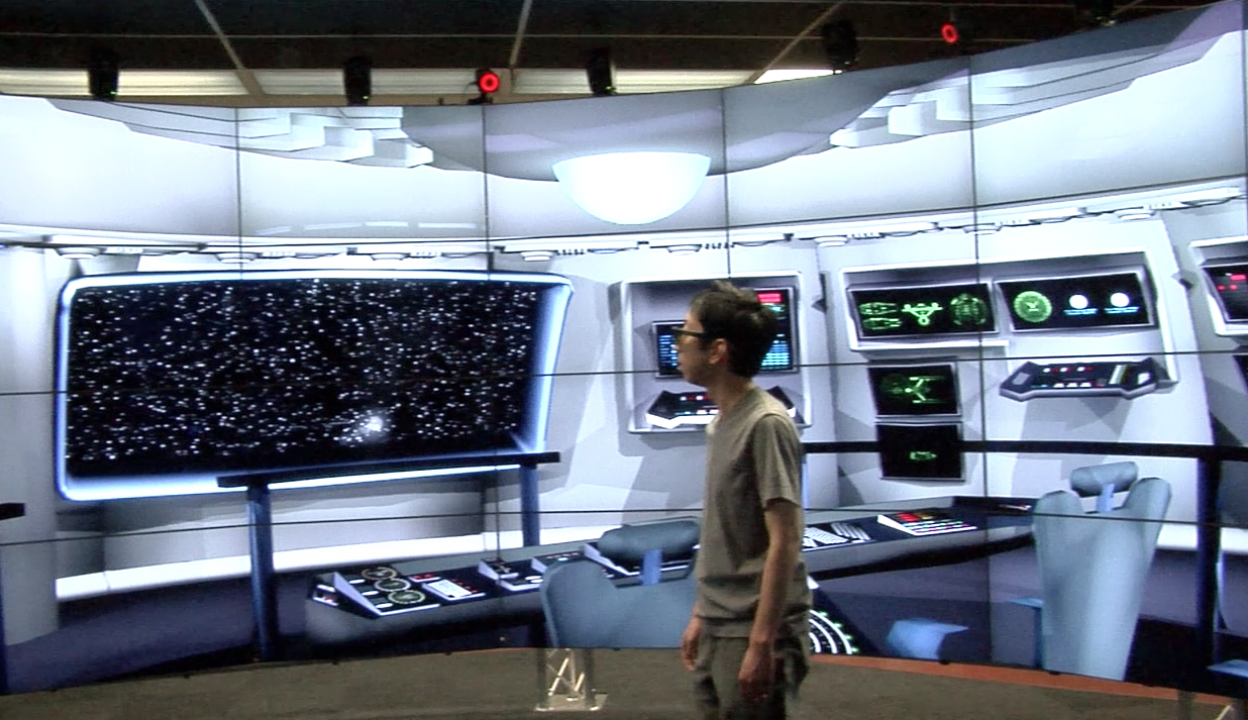|
|
||||||||||||||||||
Move over, Holodeck
Participants: Arthur Nishimoto
Institutions: Northwestern University URL: http://news.medill.northwestern.edu/chicago/news.aspx?id=211746&terms=mitch%20smith Medill Reports Chicago EDITOR’S NOTE: Here are excerpts from a recent article by Northwestern University journalism student Mitch Smith on standing on the bridge of the StarTrek Enterprise in EVL’s new CAVE2™ hybrid-reality environment. Move over, Holodeck by Mitch Smith, Medill Reports Chicago Nov 28, 2012 For the last two years, much of his - UIC computer science graduate student and EVL research assistant Arthur Nishimoto’s - free time went into designing the guts of Star Trek’s starship Enterprise, from the bridge to the transporter room. His design might offer a preview of the future of video games. At first, the Enterprise lived only in the two-dimensional world of a computer screen. But in recent months, Nishimoto has been able to walk around the command center of the ship that figured prominently in the Star Trek movies and television series. That extra dimension took shape thanks to CAVE2, a three-dimensional virtual reality system unveiled earlier this year at UIC’s Electronic Visualization Laboratory. Nishimoto studied Star Trek videos and set designs to make his model precise. Eventually, he’d like to see his Enterprise design emerge as a video game. Virtual interactive experiences where players maneuver their way through an environment are part of video gaming’s future, UIC researchers say. “We’re getting the 3D, we’ve got hi-res,” said UIC computer scientist Andrew Johnson, a creator of CAVE2. But when it comes to video games, “we still don’t have that enveloping experience of things being around you. It’s a really different experience when you’re moving naturally. Physical skill actually becomes important again.” That new paradigm poses challenges for video game designers, he said. “You want to make it look like a Hollywood film model but feel like a video game model,” Johnson said. “There’s a really delicate balance you have to do to keep interactivity and realism.” Read the complete article Email: maxine@uic.edu Date: November 28, 2012 |